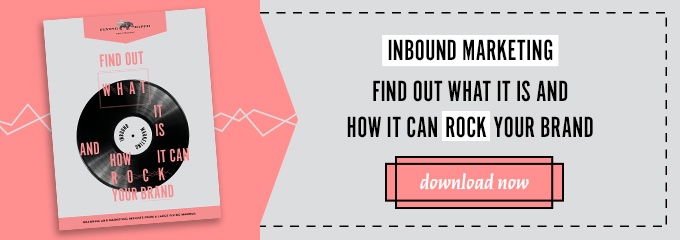Not All Content is Created Equal: Are You Creating User-Focused Content?
If you’ve read anything about marketing in the last few years, then you’ve probably read that content is critical to — pretty much — everything.
d”Content is king,” is thrown around so frequently, you’d think it was the work of a new religion.
What has come from this incessant push for content (and, content is important — don’t get me wrong) is a fervor over the mere existence of content, oftentimes at the expense of the quality, direction, or strategy behind its production.
In other words, many brands have the mindset that publishing content — like, a blog or a news section — is the key to success in and of itself. Simply having a blog is a magical element that will boost traffic, drive leads, and create sales for your company.
But, herein lies the truth: Not all content is created equal.
And, further, the act of publishing content is not nearly as important as the strategy surrounding the content that you publish.
We’ve seen this mistake happen time and time again. Companies know they “need to publish some content” and take one of two failed approaches:
- Just publish anything — This leads to posts about random inner-office happenings (which no one really cares to read), or quickly devolves into only publishing changes in staffing and/or simple pats on the back for the company itself — this stuff isn’t very useful.
- I have no idea what to publish – Some brands are so eager to publish something that they don’t even stop to consider what might actually fill the space. Instead, they just add a section to their site called “blog” and assume someone in marketing will take care of the specifics. This is how content marketing strategies die quickly. Take the time to plan before you implement it.
Some content can be great — the kind of stuff that gets shared by millions of people and earns a brand all kinds of goodwill and brand exposure.
Other content — the kind that usually falls into one of the two above categories — has quite the opposite effect. Generally, it sits on a site. And, from there, it never moves. Few people ever read it, and it certainly doesn’t go viral. If anything, it’s the kind of content that just makes a brand look out of touch, stale, or even shuttered.
What’s the problem here? The problem is that the content being created is seen for its internal business value — for its potential as a marketing tool — rather than what really matters in content: It’s value to the audience.
Luckily for you, we’re producing this content with you — our audience — in mind. (See what I did there?)
So, I’m going to help you think through your strategy in four simple steps.
1. Define your audience
This should be fairly straightforward. Who is your audience? Who are your potential buyers? The better you understand them — as professionals and as people — the better you’ll be able to target content specifically to them.
Take time to write detailed personas about your ideal customers and keep them close throughout the rest of the process. When you get stuck trying to get inside their minds, look back at these profiles.
2. Understand your audience’s needs
Don’t think about your business yet. Push it out of your mind.
Instead, think in broad strokes about the needs of the audiences you just identified. What kind of information are they looking for? What kind of content do they consume — or would they consume?
This can be tricky for some people. Keep in mind: These needs do not necessarily need to be related to the product or service that you’re selling. Take, for instance, Proctor & Gamble. They create content targeted specifically at moms. They have tons of original content: recipes, crafts, and more. This is useful content focused on the consumer, not content about their brands or products.
Bear in mind that your overall goal is to attract the right people to your content. It’s not necessarily to “sell” them on your product with a single blog post. Chances are this simply won’t happen. But, if you provide value for the people who are your potential customers then you can create an engaged relationship with them, and when they are ready to buy your product or service, you will be top of mind.
3. Specify your business objectives
This part should be easier. What are your overarching business objectives?
Are we trying to increase leads? Drive direct sales? Lower your support costs? Any of these objectives are valid and can benefit from a well-devised content strategy.
At this stage, it’s important to have a really good understanding of the role that the actual content you will be producing — whether that’s videos, blogs, photos, etc — will play in your overall effort. How will producing content help you reach your goals?
Understand not only what you’re hoping to accomplish but how and why this approach will help you get there.
4. Bridge the gap
Okay, this is where the real magic happens.
The heart of your content strategy should be a clear and concise idea that bridges the gap between your brand’s goals as a business and the needs of its customers. Think of it as the marketing equivalent of an olive branch.
Think about big ideas, not tactics. This is the central theme of your entire strategy so consider what you’re trying to accomplish and all of the various elements that will play a role in your success.
Don’t let me fool you, this isn’t a simple process. People who are great at creating strategies to bridge these two unique needs — content strategists, digital marketing strategists, etc — are in short supply. (I guess that’s why we get paid the big bucks, right?)
But, don’t feel discouraged. For every challenge, there is a strategy that will solve your problems. The key is simply to crack it.
Once you’ve found a way to bridge the space between these two needs, you’ll have the heart of your strategy in place. From there, it’s down to tactics and supporting elements (workflows, processes, etc) to make it happen. For every organization, this will be different. But, don’t let it go without being done. Putting in place a clear strategy that includes all of the implementation details will make things so much easier when its time to start cranking out the content itself.
Now, go forth with your user-focused content strategy and execute it. You’ll be happy you took the time to solve the right problem before diving into a half-baked solution.
Top photo by Flickr user mikecogh


